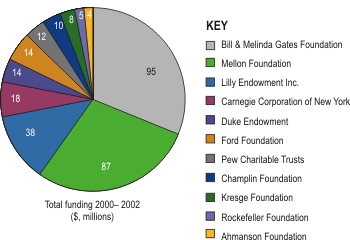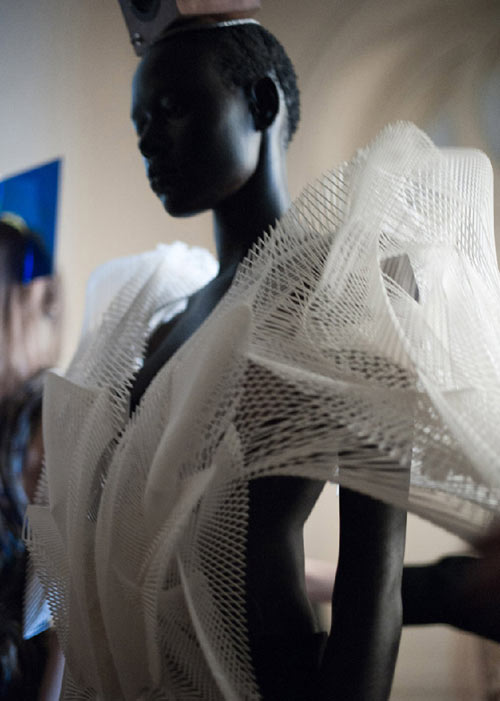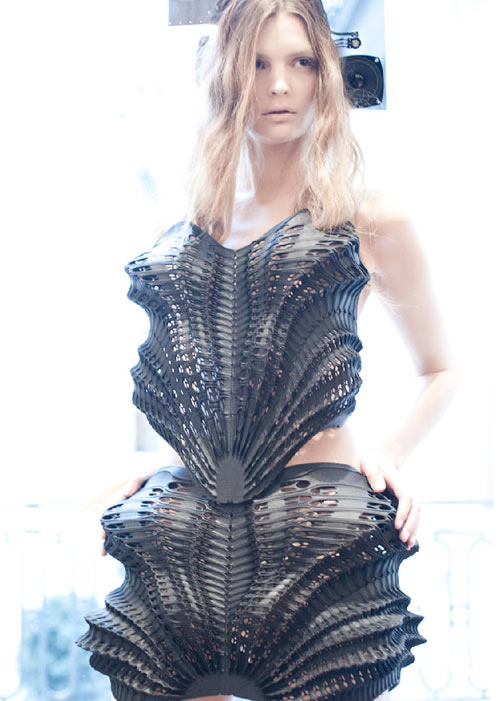....slowly, but surely.....
Wednesday, September 21, 2011
Philosophizinationismaticalipsism
I was watching Star Trek: The Next Generation last night and had a truly enlightening moment. Go figure. I know it sounds implausible, and most likely, I'm just crazy, but here me out. The character Lal, Data's android daughter has a scene where she experiences a human emotion, contrary to popular belief about the 'current capabilities' of an android. As she expresses her fear of being separated from her father, Data, to Diana Troi; she points to her chest and states "...I feel it...". When I first saw this scene, years ago, I thought that the director and the actress had chosen this movement to dramatize the fact that she is self-aware. Now, I believe that they were really making a post-modern proposition regarding the existence of feelings as a perceived reality. To put it simply, Lal was trying to reach into her chest and touch the 'feeling' that existed within her like any other 'real' object. In her purely logical mind, things that exist must have a presence, whether matter or energy. In our overly visual culture, abstract representations of feelings are common. Hearts for love, Smiles for humor etc. You rarely see an artistic expression of an emotion that attempts to manifest an object the would seem to illicit the physical feelings associated with said emotion. What would that object look like, or could it be better expressed as a system of events occurring in the body and the interaction of the different organs that participate in reacting to the emotional stimulus. Hmmm. The closest thing that I can think of to a physical expression of how emotions actually exist in the body is music. Music exists, because it's real energy moving real objects that affect the air; much like how real experiences impact our bodies perception and interpretation of those experiences to affect our minds. It's like a feedback loop. The mind experiences, the body reacts, the mind reinterprets and analyzes, the body expresses. Maybe it's that interaction itself the brings emotion into reality, that movement between otherwise mundane or even disconnected events.
Hmm.
Well, that's what I gleaned from the moment where Lal "feels" for the first time. I'm sure a more prudent observer would deduce that the motion was instinctual and the only way to express an event that occurs within an individual whether mental, physical or emotional. What do you think?
Wednesday, September 07, 2011
Thursday, June 09, 2011
Obama is a Pushover on the Environment: Ex-Interior Secretary
Sent to you by knoemoore via Google Reader:
 Photo: Elizabeth Cromwell, Wikimedia Commons, CC Bruce Babbitt was the Secretary of the Interior under President Bill Clinton. He knows firsthand the dangers of failing to push back against corporate and political interests that seek to overturn environmental safeguards and exploit the nation's invaluable natural resources. He himself admits to at times having failed to be tough enough on the conservation front, and letting big business and industry-friendly Republicans trample environmental concerns. But so far, Obama has been a total pushover. Babbitt said as muc...Read the full story on TreeHugger
Photo: Elizabeth Cromwell, Wikimedia Commons, CC Bruce Babbitt was the Secretary of the Interior under President Bill Clinton. He knows firsthand the dangers of failing to push back against corporate and political interests that seek to overturn environmental safeguards and exploit the nation's invaluable natural resources. He himself admits to at times having failed to be tough enough on the conservation front, and letting big business and industry-friendly Republicans trample environmental concerns. But so far, Obama has been a total pushover. Babbitt said as muc...Read the full story on TreeHugger

Things you can do from here:
- Subscribe to TreeHugger using Google Reader
- Get started using Google Reader to easily keep up with all your favorite sites
Tuesday, April 26, 2011
Don-8r robot set to make the homeless obsolete (video)
Sent to you by knoemoore via Google Reader:
Until now, one field has been safe from robotic interference: collecting money on the street. Not for long. A space already overcrowded with guitar playing hippies, dogs in bandanas, and children carrying bright orange UNICEF boxes has a new force to reckon with. It's Don-8r (pronounced "donator," for those who don't speak robot), programmed expressly to collect change and be adorable. University of Dundee student Tim Pryde created the coin-fueled robot to help raise money for charity. It's taken a few spins around the school's campus and has already mastered the three Ps of money collection: politeness, persistence, and performance -- the latter accomplished via color changing lights in its orb-like head. Video of Don-8r doing its thing after the break.
Continue reading Don-8r the panhandling robot set to make the homeless obsolete (video)
Don-8r the panhandling robot set to make the homeless obsolete (video) originally appeared on Engadget on Tue, 26 Apr 2011 07:34:00 EDT. Please see our terms for use of feeds.
Permalink SlashGear |
SlashGear |  Tim Pryde | Email this | Comments
Tim Pryde | Email this | CommentsThings you can do from here:
- Subscribe to Engadget using Google Reader
- Get started using Google Reader to easily keep up with all your favorite sites
Friday, April 22, 2011
Monday, April 11, 2011
Wednesday, April 06, 2011
ALL of the Above
Sent to you by knoemoore via Google Reader:

British designer Patrick Smith has created a great series of Mental Disorder Posters.




[via CMYBacon]
Share This: Twitter | Facebook | Discover more great design by following Design Milk on Twitter and Facebook.
© 2011 Design Milk | Posted by Jaime in Art | Permalink | 2 comments
Things you can do from here:
- Subscribe to Design Milk using Google Reader
- Get started using Google Reader to easily keep up with all your favorite sites
Friday, April 01, 2011
Amazing transgender performer on "Thailand's Got Talent" (video)
Sent to you by knoemoore via Google Reader:
Video Link. A version with English subtitles is here.
Above, Bell Nuntita, or in Thai, Nuntrita Khampriranon, on the "Thailand's Got Talent" TV show.
I will refrain from including any spoilers in this blog post, but just stay with it. The performance is clever and beautiful. Thailand is a country with many problems, but it's pretty awesome that a moment like this can happen in popular culture there, with applause and acceptance.
Make sure you see her message to her father, the last 45 seconds or so of the video clip. And you just *try* not to cry while you're watching that.
(Via Andrea James)
![]()
Things you can do from here:
- Subscribe to Boing Boing using Google Reader
- Get started using Google Reader to easily keep up with all your favorite sites
Thursday, March 24, 2011
Fwd: Fw: Early Deaths - AMAZING!!!!
From: Arvilla Holley <gptuddie@yahoo.com>
Date: Thu, Mar 24, 2011 at 2:04 PM
Subject: Fw: Early Deaths - AMAZING!!!!
To: "Nathanael L. Holley" <nate.holley@gmail.com>, isaac eason <heatrockie07@yahoo.com>, Godfrey Eason <greason@ncsu.edu>, "Martha H. Elliott" <bro.e@netchange.cm>, Mary Cofield <largecar4@yahoo.com>, Mattie Carter <mattiecarter44@yahoo.com>, Tiamaine Moore <m00re4me@yahoo.com>, Cynthia King <cynthiaking34@yahoo.com>, Daisybell Copeland <whitemon39@yahoo.com>, Arnold Sanford <dorothymae_6@yahoo.com>, Dorothy Keith <dotkeith@hotmail.com>, "Pearly B. Cofield" <pearly@netzero.com>, Linda Bond <abond@ecps.k12.nc.us>, Stepheny Helmcapp <hotchick420247@yahoo.com>, Tamara <sintai_wangechi@yahoo.com>, Francis Moore <ladysha12@yahoo.com>
From: Etta Palmer <jiggyt99@embarqmail.com>
To: eagleii16@msn.com; janet hines <jphines@dishmail.net>; Tamara Garcia <sintai_wangechi@yahoo.com>; Arvilla Holley <gptuddie@yahoo.com>; Alfred Cofield <alfred3761@embarqmail.com>
Sent: Wed, March 23, 2011 6:55:19 PM
Subject: Fw: Early Deaths - AMAZING!!!!
From: W W [mailto:waltonsweets@hotmail.com]
Sent: Tuesday, March 22, 2011 6:08 PM
To: Cowell, Angela R - Hertford, NC
Subject: FW: Early Deaths - AMAZING!!!!
Subject: FW: Early Deaths - AMAZING!!!!
Date: Wed, 16 Mar 2011 08:25:40 -0400
Gail Belinda Cook IIS Communications Services Raytheon - Garland, TX ************************************************************************************ This footnote confirms that this email message has been scanned by PineApp Mail-SeCure for the presence of malicious code, vandals & computer viruses. ************************************************************************************ -- Confidentiality Notice -- This email message, including all the attachments, is for the sole use of the intended recipient(s) and contains confidential information. Unauthorized use or disclosure is prohibited. If you are not the intended recipient, you may not use, disclose, copy or disseminate this information. If you are not the intended recipient, please contact the sender immediately by reply email and destroy all copies of the original message, including attachments. |
Wednesday, March 23, 2011
OHIO WOMAN CELEBRATES HER 119TH BIRTHDAY
Sent to you by knoemoore via Google Reader:
Rebecca Lanier of Warrensville Heights, Ohio celebrated her 119th birthday this week. The Mississippi native, who is the daughter of slaves, was born in 1892.
She has outlived her two children and lives with her 61-year-old grandson, who made sure to note that she is in good health and gets up and dresses herself every morning. She takes a few supplements, but does not need to take any medication for illnesses or ailments.
According to reports, the federal government has verified her age, but the Guinness Book of Records cannot accept it without a birth certificate.
Things you can do from here:
- Subscribe to CONCRETELOOP.COM using Google Reader
- Get started using Google Reader to easily keep up with all your favorite sites
Monday, March 21, 2011
Ron van der Ende: Bas-Relief Reclaimed Wood Sculptures
Sent to you by knoemoore via Google Reader:
These wall-mounted bas-relief sculptures are constructed by Rotterdam based artist Ron van der Ende using reclaimed wood.
In van der Ende's words:
I collect old doors and stuff. Old painted wood that I find in the street. I take it apart and skin it to obtain a 3mm thick veneer with the old paint layers still intact. I construct bas-reliefs that I cover with these veneers much like a constructed mosaic. I do not paint them!
Read Full Post
Things you can do from here:
- Subscribe to Apartment Therapy Main using Google Reader
- Get started using Google Reader to easily keep up with all your favorite sites
Thursday, March 10, 2011
Time To Turn Public Libraries into “TechShops”?
Sent to you by knoemoore via Google Reader:

To me, public libraries — the availability of free education for all — represent the collective commitment of a community to their future. They symbolize what is most important, a commitment to educating the next generation. The role of a public library should also adapt over time, and that time is finally here. It's time to plan how we're going to build the future and what place public libraries have, should have, or won't have. The goal of this article is to get everyone talking about one of our great resources, the public library, and its future.
If you're reading this, you're likely not reading it in a public library. Computers are cheap, and internet access is pretty good for most people. The majority of people do not get their online news from terminals at the public library. At one time the library was "the living internet" — you went there to look up something hard to find, to do research — now it's all at our fingertips through search engines, Wikipedia, and the web.
So where does this leave libraries? Last week I walked by the Borders on Broadway in NYC — it's going out of business. There are many reasons, but I think most people will agree giant collections of books in giant buildings do not make as much sense (or cents!) any longer. Not commercially, and likely not publicly, such as in a library setting. So where does this leave the library? Maybe they'll move more and more to eBooks with some weird library-DRM, collections of DVDs, and other media outside of books. But again, it's usually better online, and available in our homes.
Let's explore what could be ahead for public libraries and how we could collectively transform them into "factories" — not factories that make things, but factories that help make people who want to learn and make things. Will libraries go away? Will they become hackerspaces, TechShops, tool-lending libraries, and FabLabs, or have these new, almost-public spaces displaced a new role for libraries? For many of us, books themselves are tools. In the sense that books are tools of knowledge, the library is a repository for tools, so will we add "real tools" for the 21st century?
Before we dive into the future, let's take a look at the current public library scene now. Feel free to skip this part. I think it's pretty interesting though.
First up:
How are public libraries used in the USA?
Nationwide, visits to public libraries totaled 1.50 billion, or 5.1 library visits per capita. There were 2.28 billion circulations of library materials (7.7 per capita), and 1.21 uses of Internet PCs per capita during fiscal year 2008.
Source: Public Libraries in the United States: Fiscal Year 2008
How many public libraries are there in the USA?
If you add up public libraries and public school libraries, it's about 100,000, but if you just look at public libraries (ones that are not part of a school), it's about 9,000.
Source: Number of Libraries in the United States, ALA Library Fact Sheet
To put a 9,000 locations number into perspective:
There are currently (in the US) 650 Golds Gym locations, 1,750 Target locations, 2,300 Home Depot locations, 4,500 RadioShack locations, 10,000 Curves International Fitness locations, 17,000 Starbucks locations, and 32,000 McDonald's locations.
How many people are paid/employed in libraries? These include part-time positions.
Librarians:
47,926
Other Paid Staff:
97,318
Total Paid Staff (Public Libraries):
145,244
Source: Number Employed in Libraries, ALA Library Fact Sheet
How much does it cost to run these 9,000 public libraries?
Total operating expenditures in public libraries steadily rose during the study period, going from $8.29 billion in FY1999 to $10.72 billion in FY2008 (figures are in constant 2008 dollars), an absolute increase of $2.43 billion and a percentage increase of 29.4 percent… Per capita operating expenditures increased during the period as well. Per capita operating expenditures increased from $31.56 in FY1999 to $36.36 in FY2008, an absolute increase of $4.80 per person and a percentage increase of 15.2 percent…
Source: Library Operating Expenditures: A Selected Annotated Bibliography
Let's say it costs about $10 billion to run about 9,000 public libraries, that's an average of about $1 million per year, per library. That's not accurate, of course, but let's deal in averages. In the same report(s), 24% of public libraries had operating expenditures of less than $50,000; 42% expended $50,000 to $399,999; and 34% expended $400,000 or more.
Where does the money come from?
Total operating revenue of public libraries and percentage distribution of revenue, by source of revenue and state: Fiscal year 2008, which reports that an estimated 83 percent of public libraries' total operating revenue of $11.4 billion came from local sources; 9 percent from state sources; 0.4 percent from federal sources; and 8 percent from other sources, such as monetary gifts and donations, interest, library fines, fees, and grants.
OK, so for the most part it's a local effort, paid for by each community.
Source: Library Operating Expenditures: A Selected Annotated Bibliography
And lastly:
Where does the money go (not including staff)?
…69 percent was expended for print materials; 11 percent was expended for electronic materials, such as e-books, e-serials (including journals), government documents, databases (including locally mounted, full text or not), electronic files, reference tools, scores, maps, or pictures in electronic or digital format, including materials digitized by the library, which can be distributed on magnetic tape, diskettes, computer software, CD-ROM, or other portable digital carrier, and can be accessed via a computer, via access to the Internet, or by using an e-book reader, and includes expenditures for materials held locally and for remote electronic materials for which permanent or temporary access rights have been acquired, and also includes expenditures for database licenses; and 19 percent for "Other materials," such as microform, audio, video, DVD, and materials in new formats.
Mostly print books. That makes sense — they're libraries. This will likely change over time, but it's unclear how eBooks will be managed at this time. At least when a physical book is purchased it can last years, but DRM systems for eBooks have always seemed problematic to me, more so with multiple users, devices, and "lenders."
Source: Library Operating Expenditures: A Selected Annotated Bibliography
Another bit of history that's interesting is "The Carnegie Library". More than half are still around, and 31 of the 39 in New York are still in use.
A Carnegie library is a library built with money donated by Scottish-American businessman and philanthropist Andrew Carnegie. 2,509 Carnegie libraries were built between 1883 and 1929, including some belonging to public and university library systems. 1,689 were built in the United States… When the last grant was made in 1919, there were 3,500 libraries in the United States, nearly half of them built with construction grants paid by Carnegie.
Carnegie believed in giving to the "industrious and ambitious; not those who need everything done for them, but those who, being most anxious and able to help themselves, deserve and will be benefited by help from others."
The design of the Carnegie libraries has been given credit for encouraging communication with the librarian. It also created an opportunity for people to browse and discover books on their own. "The Carnegie libraries were important because they had open stacks which encouraged people to browse….People could choose for themselves what books they wanted to read," according to Walter E. Langsam, an architectural historian and teacher at the University of Cincinnati. Before Carnegie, patrons had to ask a clerk to retrieve books from closed stacks.
Source: Wikipedia. To get funding, the formula was simple, demonstrate the need for a public library, provide the building site, annually provide 10% of the cost of the library's construction to support its operation, and provide free service to all.

There are modern-day "Carnegies" – "Historically, the Andrew W. Mellon Foundation has been the largest single private foundation granting source for libraries. While the Gates Foundation led in 2000 and 2001″. Chart above, source: Worldwide education and library spending
I have a favorite story about someone who visited a library, it's exactly not upbeat – but I think you'll understand why it's a good one – more so on the 25th anniversary of the Challenger explosion.
The boy walked to the counter of the Lake City Public Library through a gantlet of stares in 1959. Ronald E. McNair, then 9, wanted to check out books on advanced science and calculus, but the librarian wouldn't release them. "We don't circulate books to Negroes," she told him.
Library patrons laughed at McNair's behavior, and the librarian threatened to call the police — and his mother, Pearl.
McNair didn't budge.
Instead, he hoisted himself onto the counter, his spindly legs dangling, and waited, because he wasn't leaving without the books. After two police officers determined that McNair wasn't causing a public disturbance, and when Pearl said she would pay for the books if McNair didn't bring them back, the librarian acquiesced.
"Thank you, ma'am," McNair, prompted by his mother, said before he walked out of the library. McNair, always a precocious student, would become an astronaut and a hometown hero…
26 years later – Ronald McNair, the second African-American in space, died at age 35 in the Challenger explosion on Jan. 28, 1986. What an amazing story and what amazing changes happened in one person's short but spectacular life. Obviously the public library was a big part of Ronald's life. It's interesting to think about the 9 year old kids now that want to build or learn something, where will they go? Who will they ask and what will they become in 26 years given the right "tools"?
One more note – (since it will be mentioned in the comments) – tool-lending libraries. There are about 25 or so in the USA and this is an excellent start.
…tool-lending libraries allow library patrons to borrow tools, equipment and "how-to" instructional materials, usually free of charge. A tool lending library was started in Columbus, OH in 1976. Originally run by the City, the Tool Library is now operated by Rebuilding Together Central Ohio, a 501 (c)(3) non-profit organization that works to preserve and revitalize homes and communities in Central Ohio. The RTCO Tool Library makes available over 4,500 tools free of charge to both individuals and non-profit organizations. One of the first tool libraries was the Berkeley Tool Lending Library, which started in 1979 with a $30,000 community block grant.
I know the fellow who runs a tool lending spot in NYC, I should try that out. As far public libraries go, I live in NYC and there are 2-3 public libraries within a 15 minute walk – I really tried to use them, but the online interface wasn't that great, most of the things I wanted to checked out were always taken and it's hard to beat "instant" since I have a computer and web connection. After the Kindle came out and Kindle apps I haven't visited the library – I realize not everyone has a device that read eBooks, but I think most of us will agree that's where it's heading. There are even predictions that eBook readers will be free and books will ultimately be 99 cents. That's less than a fine and I was always late with physical books.
So, if you've made it this far you have a rough idea of the public library landscape – I think for a lot of people, we visited the public library as a kid or student, and later not as much. I work with younger folks and from what they tell me, it's rare for them to have ever used a public library. Internet access and cheaper computers have replaced a lot of that, and the libraries they have been in recently were at schools – not public ones. The are a handful of tool lending libraries, but it certainly isn't a national effort (yet).
But, looking back where have I visited in the last few years that's a "public-like" space for learning? Hacker Spaces, FabLabs and TechShops… If you're a MAKE reader, you're familiar with these – but let's quickly talk about each one.
HackerSpaces

Image: DIY Freaks Flock to 'Hacker Spaces' Worldwide, Wired.com
A Hacker Space is usually a membership based location featuring workshops, tools and people who generally like to make things.
A hackerspace or hackspace (also referred to as a hacklab, makerspace or creative space) is a location where people with common interests, usually in computers, technology, science or digital or electronic art can meet, socialize and/or collaborate. A hackerspace can be viewed as an open community labs incorporating elements of machine shops, workshops and/or studios where hackers can come together to share resources and knowledge to build and make things. Many hackerspaces participate in the use and development of free software and alternative media and can be found in infoshops or social centers.
There are hundreds of Hacker Spaces that have appeared, almost overnight around the world – from my recollection over the last decade, the ones in Europe were really appealing, many makers were traveling around the world (Mitch Altman for example) and eventually word spread. Now, just about every state in the USA has one and most large cities have Hacker Spaces.
Hacker Spaces usually revolve around everyone paying the rent (part of membership, largest cost of a space) and shared costs, it's not really possible to estimate the average cost to get one started but it's usually whatever the rent is for a year in your local area for a pretty good sized location.
FabLabs

Image: Fabrication labs let student and adult inventors create products, solve problems, Cleveland.com
Next up, FabLabs. As of July 2010, there were 45 labs in 16 countries. Similar to a HackerSpace but FabLabs were started before the HackerSpaces really took off and FabLabs generally are associated with MIT – so it was more of a sponsored / academic effort and not a self-forming organic one like the HackerSpaces. One of the things I really like about FabLabs is they're all similar in terms of the equipment they promote and use, this standardization of laser cutters, CNCs, computers is a good base to work from if you're going to do something in one area of the world and want others to be able to do it somewhere else, all using the same tools.
A Fab Lab (fabrication laboratory) is a small-scale workshop with an array of flexible computer controlled tools that cover several different length scales and various materials, with the aim to make "almost anything". This includes technology-enabled products generally perceived as limited to mass production.
While Fab Labs have yet to compete with mass production and its associated economies of scale in fabricating widely distributed products, they have already shown the potential to empower individuals to create smart devices for themselves. These devices can be tailored to local or personal needs in ways that are not practical or economical using mass production.
Getting a FabLab started can be as low as $25,000 but realistically it's likely a few hundred thousand.
TechShops

A TechShop Snapshot, Much inventive thinking takes place during a typical day at this community workshop. IEEE
And finally, TechShop. A TechShop is a commercial venture that's almost a combination of a Hacker Space and a FabLab. A TechShop is membership based, has pretty much all the equipment you need to make anything and there are workshops, classes, etc.
TechShop is a membership-based workshop that provides members with access to tools and equipment, instruction, and a community of creative and supportive people so they can build the things they have always wanted to make. You can think of TechShop like a fitness club, but with tools and equipment instead of exercise equipment. It is sort of like a Kinko's for makers, or a Xerox PARC for the rest of us. TechShop is designed for everyone, regardless of their skill level. TechShop is perfect for inventors, makers, hackers, tinkerers, artists, roboteers, families, entrepreneurs, youth groups, FIRST robotic teams, arts and crafts enthusiasts, and anyone else who wants to be able to make things that they dream up but don't have the tools, space or skills.
There are currently have three locations (Menlo Park CA, Raleigh NC, and San Francisco CA). They have over 1,500 members between the 3 open locations and a few already committed to San Jose. TechShop also had over 200 people signed up for SF before opening. They are working on San Jose CA right now (lease signed, interior demo and construction underway). After that, New York and Detroit as locations to follow after San Jose opens. TechShop hopes to have 100 locations in five years. Across all the locations they have about 50 people working for them.
I asked the TechShop folks how much it cost to get a TechShop started, and they said between $1.5 and $2.5 million, depending on the market. That's not too much above the average yearly cost to keep a public library going.
Can libraries be a "TechShop"?
And here we are, the part where I propose we think about what role the public library can or should have. I'm really interested in what every one thinks, so please post in the comments. I have more questions than answers, but my "gut" says we're not going to see public libraries as the centers of learning state-to-state that they once were.
If the only place 3D printers, laser cutters and learning electronics in a public-like space only happens in fee/memberships based spaces (TechShop, Hacker Spaces) – that will leave out a segment of the population will never have access. FabLabs often are geared towards under-served communities, so perhaps it will be a combination of FabLabs and Hacker Spaces.
What if we were to convert just 1% or even 10% of the 9,000 public libraries in the USA to "TechShops". I say TechShop because I think they could get it done with the right amount of funding, or at least coordinate the effort. 1% of the USA's public libraries is about 90, that's close to the TechShop goal in 5 years, 10% would be 900 locations – not a bad goal.
But why does it matter? Some of you will likely say that Hacker Spaces and TechShops are filling the void where a public library could have evolved to – that's probably true. I think public libraries are one of those "use it or lose" it things we have a society, given the current state of budgets all over the USA, I think unless they're seen as the future, we might just lose them.
- How can we encourage American innovation?
- How can we get kids access to laser cutters, CAD, 3-printers and tools to design and build?
- How can we train each other for the jobs and skills needed in the 21st century?
- How can we spark the creativity and imagination of kids?
- How can America be a world leader in design and engineering?
I think many of these things could be helped by the re-tooling of one of our greatest resources, the public library. It wouldn't be easy, but that's the point – it would be a challenge and worth doing. We can wait and hope every state thinks about this, or a Hacker Space can support something like this (and allow kids to be part of it). But why wait, I think libraries and librarians are underutilized for skill building – it's not fun to talk about, but that's the impression I get from everyone I talk to – they *love* their town to have one, but they never use it. They have the space, they have net connections, they're in great locations – why not evolve? If space / rent is always a challenge for a Hacker Space, perhaps libraries can provide this space as books go "digital".
It's scary, laser cutters, CAD stations, CNC, 3D printers. Training needed, equipment purchases, a safety class, workshops – I'm sure there are lots of reasons it could never work out, but there are also many reasons it could – besides, how often do you hear people talking about lining up outside the local library because the new 3D printer has arrived and they want to use it?
I certainly do not know what the public library will be like in 10 years or 20 years, but I think the conversations we all have here may help shape some of the thinking – post up in the comments, what do you think the public library should be in the 21st century?
Things you can do from here:
- Subscribe to Make: Online using Google Reader
- Get started using Google Reader to easily keep up with all your favorite sites
Tuesday, March 08, 2011
Cutting-Edge Fashion by Daniel Widrig and Iris van Herpen
Sent to you by knoemoore via Google Reader:

London-based architect Daniel Widrig and Sutch fashion designer Iris van Herpen first collaborated at Amsterdam Fashion Week in 2010 on a collection called Crystallization (above) — a fashion collection of 3D-printed dresses. Escapism is the continuation of this collaboration and launched at Paris Fashion week earlier this year.
The goal of the Escapism collection is to take 3D printing and push the limits on the wearability of the printed pieces. It investigates the possibility of using advanced technologies and computer-aided design to create haute couture fashions made of fiber-like elements that are lightweight and flexible.







The collection was produced in collaboration with New York based label .MGX by Materialise via Selective Laser Sintering (SLS) in Polyamide.
Share This: Twitter | Facebook | Discover more great design by following Design Milk on Twitter and Facebook.
© 2011 Design Milk | Posted by Jaime in Art, Style & Fashion | Permalink | No comments
Things you can do from here:
- Subscribe to Design Milk using Google Reader
- Get started using Google Reader to easily keep up with all your favorite sites
The Art of Manliness - army bed corners
Sent to you by knoemoore via Google Reader:
I love the look of a tightly made bed! And who makes a neater bed than the men and women of the military? Luckily, I stumbled upon a guide for making your bed like a solder — no basic training required.
Read Full Post
Things you can do from here:
- Subscribe to Apartment Therapy Main using Google Reader
- Get started using Google Reader to easily keep up with all your favorite sites










